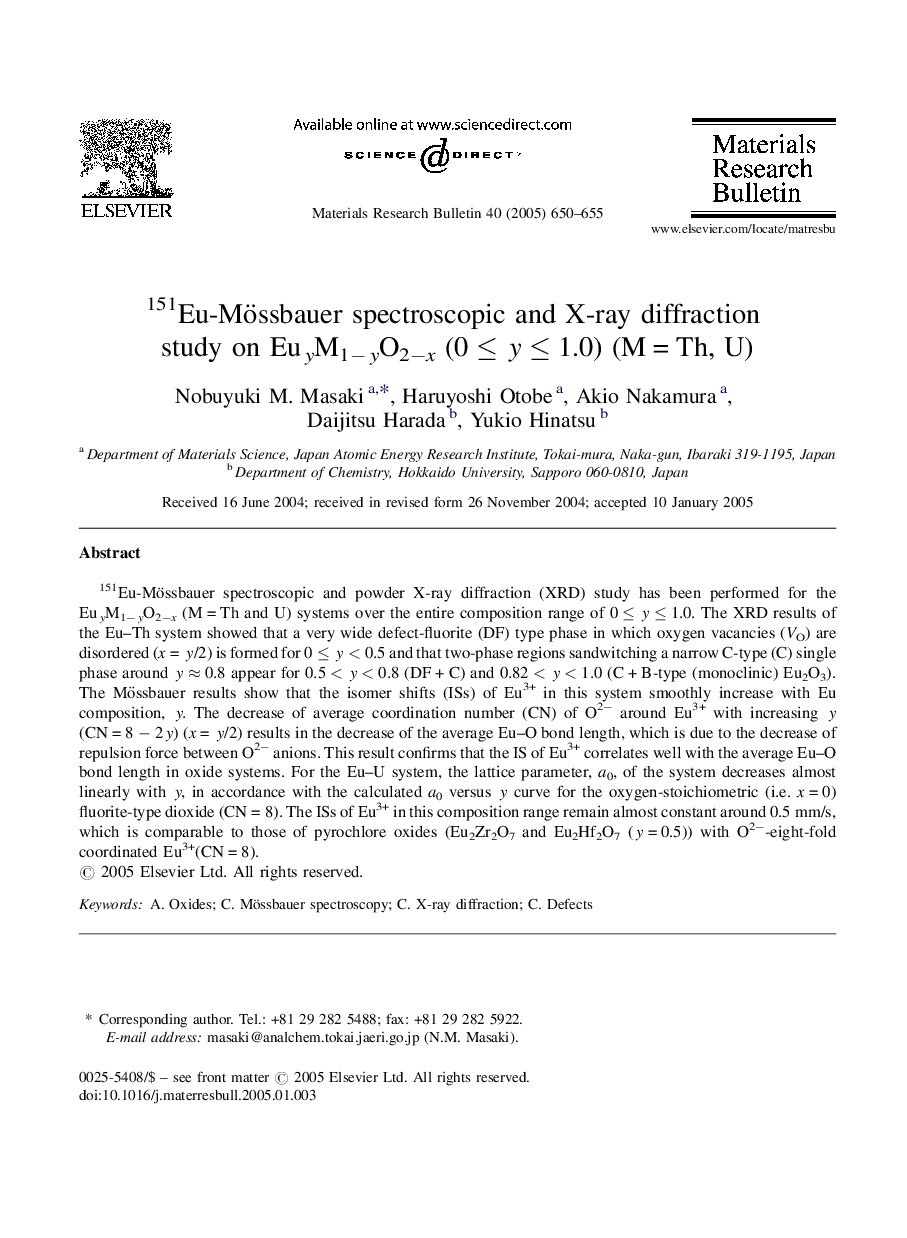| Article ID | Journal | Published Year | Pages | File Type |
|---|---|---|---|---|
| 10632073 | Materials Research Bulletin | 2005 | 6 Pages |
Abstract
151Eu-Mössbauer spectroscopic and powder X-ray diffraction (XRD) study has been performed for the EuyM1âyO2âx (M = Th and U) systems over the entire composition range of 0 â¤Â y â¤Â 1.0. The XRD results of the Eu-Th system showed that a very wide defect-fluorite (DF) type phase in which oxygen vacancies (VO) are disordered (x = y/2) is formed for 0 â¤Â y < 0.5 and that two-phase regions sandwitching a narrow C-type (C) single phase around y â 0.8 appear for 0.5 < y < 0.8 (DF + C) and 0.82 < y < 1.0 (C + B-type (monoclinic) Eu2O3). The Mössbauer results show that the isomer shifts (ISs) of Eu3+ in this system smoothly increase with Eu composition, y. The decrease of average coordination number (CN) of O2â around Eu3+ with increasing y (CN = 8 â 2y) (x = y/2) results in the decrease of the average EuO bond length, which is due to the decrease of repulsion force between O2â anions. This result confirms that the IS of Eu3+ correlates well with the average EuO bond length in oxide systems. For the Eu-U system, the lattice parameter, a0, of the system decreases almost linearly with y, in accordance with the calculated a0 versus y curve for the oxygen-stoichiometric (i.e. x = 0) fluorite-type dioxide (CN = 8). The ISs of Eu3+ in this composition range remain almost constant around 0.5 mm/s, which is comparable to those of pyrochlore oxides (Eu2Zr2O7 and Eu2Hf2O7 (y = 0.5)) with O2â-eight-fold coordinated Eu3+(CN = 8).
Related Topics
Physical Sciences and Engineering
Materials Science
Ceramics and Composites
Authors
Nobuyuki M. Masaki, Haruyoshi Otobe, Akio Nakamura, Daijitsu Harada, Yukio Hinatsu,
